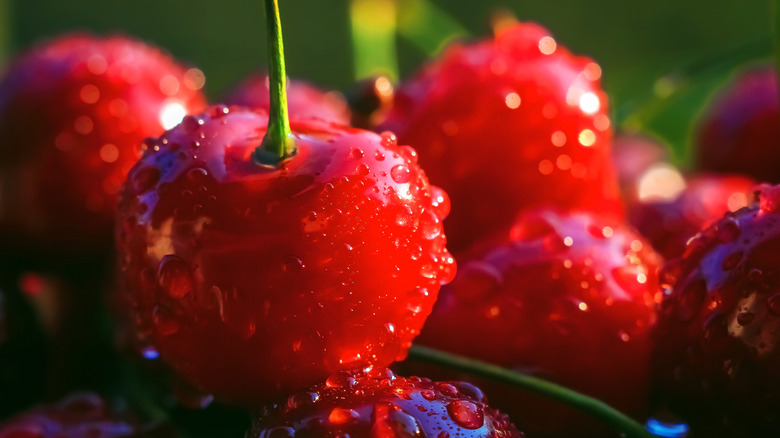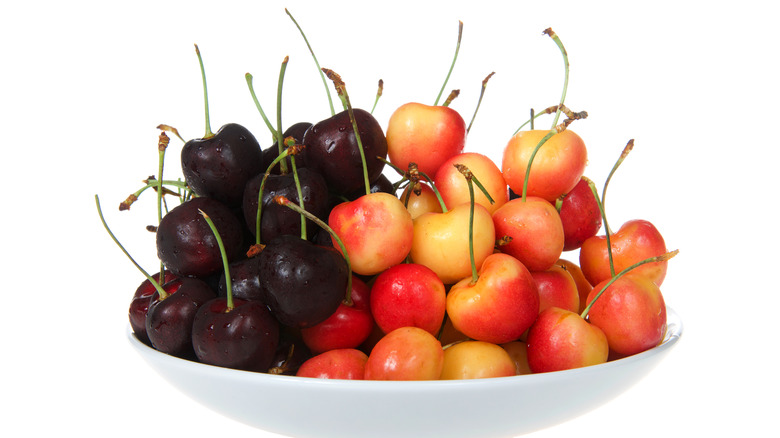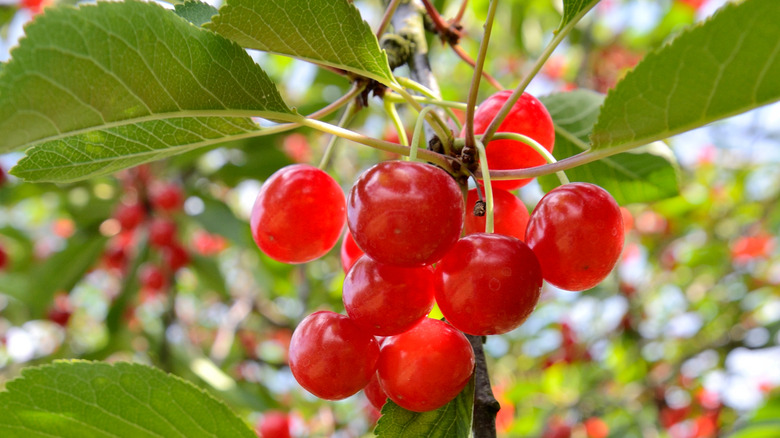The Real Difference Between Sweet Cherries And Tart Cherries
Cherries are the heralds of summertime. Juicy, crisp, and versatile, we love them for snacking, baking, and dropping them in cocktails. The balance of sweetness and acidity makes cherries the perfect feature in this classic cherry clafoutis, and in this lattice-topped, slightly boozy cherry pie. There are more than a hundred different cultivars of cherries, each with its own unique properties, so choosing the right kind of cherry for your needs can feel a little intimidating.
Regardless of whether you're looking for a sweet or tart cherry, you should look for fruit that's fairly firm and perfectly ripe, because Pick Your Own indicates that cherries do not continue to ripen after harvest. The cherries should be kept out of direct sunlight, and when you get them home, you shouldn't wash them until you're ready to eat or cook with them. Cherries are even more perishable than strawberries and blueberries, so they need to be refrigerated right away, at temperatures above freezing to preserve the best flavor and texture.
Sweet cherries
According to the Agricultural Resource Marketing Center, most of the sweet cherries grown in the U.S. come from the western part of the country. Depending on which state you're in, the season runs from the end of April through the middle of August. Washington, California, and Oregon produce nearly all the sweet cherries in the nation, for a combined total of 265,820 tons in 2020. Sweet cherries are also grown in Idaho, Utah, and Montana.
The most important variety of sweet cherry is undoubtedly Bing, according to Washington State University, though other dark red varieties like Chelan and Cowiche, along with red varieties like Lambert, and the prized Rainier yellow cherry are also popular. Sweet cherries are best for eating fresh or in fruit salads because they have a relatively high sugar content of roughly 13 grams per 100 grams of fruit, per the USDA. In the U.S. most sweet cherries (about 75-80%) are eaten fresh, while the remaining 20-25% are processed by brining, canning, freezing, or juicing.
Sour cherries
Tart or sour cherries have a higher acid-to-sugar ratio than sweet cherries. Native to Europe, most sour cherries in the U.S. are produced in Michigan, New York, Utah, Washington, and Wisconsin, according to the USDA. There are two major varieties of sour cherries in the U.S., the most popular of which is the Montmorency. Montmorency cherries are smaller in size than their sweet relatives, and when they're ripe, they turn bright red. Most of these cherries are processed and preserved as frozen, dried, or juiced cherries, rather than eaten fresh, as they're quite tart!
Morello cherries are the other kind of sour cherry grown in the U.S. Like Montmorency cherries, the fruit is smaller than sweet varieties, though the Morello's deep red color can masquerade as a sweet cherry for unsuspecting consumers. Morello cherries have deep, intensely colored juice, and they're the variety commonly used in high-quality cocktail cherries, often preserved in maraschino liqueur or brandy. You can even make your own bourbon-soaked cherries with fresh or frozen sour cherries and serve them up in a craft cocktail.


